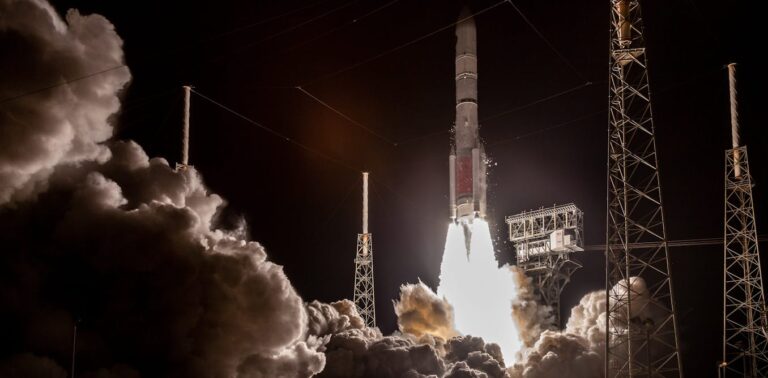
atNorth has signed an agreement with Danish waste-to-energy utility Vestforbrænding that will see excess heat from the Nordic operator’s upcoming DEN01 data center used to warm thousands of homes near Copenhagen, underscoring how high-density digital infrastructure is being woven into national heat and decarbonization strategies.
DEN01, a 22.5MW metro data center in Ballerup, Greater Copenhagen, is scheduled to come live in the first quarter of 2026. The facility is designed around energy-efficient direct liquid cooling, which removes heat from IT equipment via warm water rather than relying primarily on traditional air-based systems. Instead of treating that heat as waste, atNorth and Vestforbrænding will feed it into the local district heating network, with the goal of supplying heat to more than 8,000 homes from 2028.
By integrating the data center into Vestforbrænding’s large district heating grid, the partners expect to reduce the overall energy needed to provide space heating and hot water locally, lowering the carbon footprint for both organizations. For atNorth, the deal forms part of a broader blueprint for what it calls “responsible” data center operations, covering sustainable construction, high efficiency, and local community engagement. For Vestforbrænding, it supports the utility’s 2030 district heating plan, which includes phasing out oil and gas boilers and integrating new low-carbon heat sources.
“For many years, we have talked about surplus heat from data centers being part of the future. Now the future is here,” said Steen Neuchs Vedel, CEO of Vestforbrænding. He characterized the agreement as a concrete example of sector coupling, where the digital and energy systems are linked in practice to benefit consumers.
Denmark’s policy environment is a key backdrop to the project. The country has set a net-zero target for 2045 and aims for a 110% reduction in emissions by 2050, with a specific focus on decarbonizing district heating and phasing out coal. Heat recycling from industrial and digital infrastructure fits the government’s circular economy objectives, and utilities are actively seeking reliable sources of low-temperature heat that can be upgraded and distributed through existing networks.
For atNorth, which markets itself as a Nordic provider of high-density colocation and built-to-suit data centers, the initiative is also a response to rapidly growing demand for “AI-ready” infrastructure. As AI workloads drive higher rack densities and power consumption, questions around waste heat, local impact and grid integration are becoming more prominent in site selection and design.
“As the demand for AI ready digital infrastructure continues to increase, it is imperative that data center companies scale in a responsible way,” said atNorth CEO Eyjólfur Magnús Kristinsson. “By actively seeking heat reuse partnerships for our data centers, we can mitigate our environmental impact, benefit the communities in which we operate and help clients decarbonize their IT workloads.”
The DEN01 project is not atNorth’s first move in this area. The company recently announced a collaboration with Wa3rm, a specialist in circular and bio-based operations, to reuse excess heat from its DEN02 data center in Denmark to grow vegetables near the site. In Finland, atNorth has a separate agreement with Kesko Corporation that will channel waste heat from its FIN02 facility into heating a neighboring Kesko retail store. Together, these projects point to a model where data centers function not only as power-hungry digital factories but as integrated components of local energy and resource systems.
For data center operators, utilities and enterprise customers, the atNorth – Vestforbrænding deal offers a real-world example of how residual heat can become an asset rather than a liability – provided there is sufficient planning, scale and infrastructure to connect bits with kilowatts and, ultimately, radiators.
Executive Insights FAQ
What is residual heat from data centers and why does it matter?
Residual heat is the thermal energy generated as servers, storage and networking equipment consume electricity. In dense facilities, this heat is substantial and must be removed to keep systems within operating limits. Traditionally, it is simply rejected into the atmosphere via chillers or cooling towers. Capturing and reusing this heat improves overall energy efficiency, lowers carbon intensity at a system level and can support local heating needs.
How does a data center actually supply heat to homes?
In setups like atNorth DEN01, the cooling system – here using direct liquid cooling – extracts heat into water circuits. That warm water is then transferred via heat exchangers into a district heating network operated by a utility. The utility may upgrade the temperature with heat pumps and then distribute it through insulated pipes to buildings. From the data center’s perspective, it replaces conventional heat rejection equipment with an interface to the district heating grid.
What are the main business drivers for heat reuse projects?
For operators, heat reuse can improve sustainability metrics, support permitting and community acceptance, and eventually contribute to new revenue streams or reduced cooling costs. For utilities and municipalities, surplus heat is a low-carbon source that can displace fossil-based boilers. For enterprise customers, using facilities with heat reuse can help meet ESG targets and reduce the embedded emissions of their digital operations.
What challenges do operators face in implementing residual heat projects?
Key challenges include location (you need a viable heat network or anchor loads nearby), matching temperature levels to district heating needs, synchronizing investment timelines between the data center and utility, and ensuring contractual and regulatory frameworks support long-term collaboration. There is also a technical integration challenge: designing cooling and control systems that are both resilient for IT and predictable as a heat source.
What should CIOs and infrastructure leaders consider when evaluating data centers with heat reuse?
They should look beyond basic PUE and assess how the facility fits into local energy systems: Is residual heat meaningfully reused? How does that support their own sustainability reporting? They should also verify that heat reuse does not compromise core priorities such as uptime, redundancy and scalability. When aligned correctly, choosing sites with mature residual heat schemes can be a way to reduce the climate impact of digital infrastructure without sacrificing performance or resilience.

